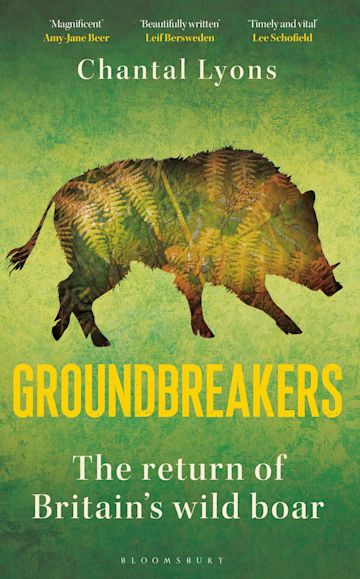If ever an animal deserved a bright, shiny new biography, surely it is this one. Red Kites, Ospreys and White-tailed Sea Eagles are returning to our skies, Pine Martens and Beavers are on their way back, and the talk now is of Wildcats, Lynx and even Wolves. Yet the Wild Boar, an invaluable keystone species, is in limbo. What looked like the beginnings of a return have stalled, and the threat from swine flu and a resulting eradication at the hands of government foresters hangs menacingly over those that remain. How did it come to this?
Groundbreakers approaches its subject from every angle. There are the author’s early-morning and nocturnal forays into the Forest of Dean hoping to see an adult or two or, even better, a posse of excitable young ‘humbugs’. We learn about boar elsewhere in Europe where they are very much part of the fabric of the landscape, and we hear of this species’ complex and troubled history here in Britain. We hear too from a wide range of people who interact with boar and view them from very different perspectives: individuals who love them, are frightened by them, value them for their role in rewilding, worry about their impact on crops, livestock or playing fields, or, even as they struggle to become established, welcome them for the sport and food they provide. This builds into a rounded picture of the animal and the various ways in which it influences its environment and the people who live with it.
While always readable, there is depth and nuance to the story. I had certainly not appreciated the full extent of the Wild Boar’s ecological impacts, extending far beyond the well-known rooting, which exposes bare soil and increases habitat diversity for plants and invertebrates. Boar transport seeds, mycorrhizal fungi and even soil mites over large distances. They break up dense stands of Bracken. Their droppings attract invertebrates and the animals that feed upon them, and their muddy wallows hold water in the landscape when all around is parched and dry. And they are no different from any of our larger native mammals in their ability to give conservationists a headache or two, through opportunistic predation for example, or by homing in on woodland flowers or species-rich grasslands.
We get a sense of the author’s views throughout, but they come to the fore at the end of the book. By now, we know that she has considered the story from all sides. Her conclusions are balanced and, for me anyway, wholly persuasive. I was left hoping that the full title of the book turns out to be justified, and that the unfolding story of the Wild Boar (and ourselves) becomes one of tolerance and integration. As things stand, that is not the track we are on.
If we are serious about restoring wildlife, and if the recovery targets trotted out endlessly by government are to be anything other than window-dressing, we need to do something that most European countries take for granted: we need to learn to live with this enigmatic, intelligent and (one more time for the benefit of government) native animal, for the sake of our wildlife and for the enrichment of our own lives. Chantal Lyons has done her bit. She has come to know the Wild Boar as well as anyone. And she has written a fine book that will influence the ongoing debate for many years to come.

